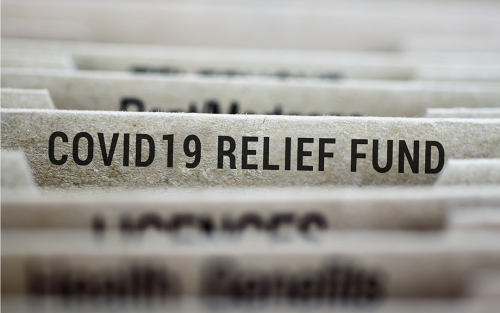Did Too‑Big‑To‑Fail Reforms Work Globally?

Once a bank grows beyond a certain size or becomes too complex and interconnected, investors often perceive that it is “too big to fail” (TBTF), meaning that if the bank were to fail, the government would likely bail it out. Following the global financial crisis (GFC) of 2008, the G20 countries agreed on a set of reforms to eliminate the perception of TBTF, as part of a broader package to enhance financial stability. In June 2020, the Financial Stability Board (FSB; a 68-member international advisory body set up in 2009) published the results of a year-long evaluation of the effectiveness of TBTF reforms. In this post, I discuss the main conclusions of the report—in particular, the finding that implicit funding subsidies to global banks have decreased since the implementation of reforms but remain at levels comparable to the pre-crisis period.
The New York Fed DSGE Model Forecast—September 2020
This post presents an update of the economic forecasts generated by the Federal Reserve Bank of New York’s dynamic stochastic general equilibrium (DSGE) model. We describe very briefly our forecast and its change since June 2020.
Consumers Expect Modest Increase in Spending Growth and Continued Government Support
COVID‑19 and the Search for Digital Alternatives to Cash
The Official Sector’s Response to the Coronavirus Pandemic and Moral Hazard

Any time the Federal Reserve or the official sector more broadly provides support to the economy during a crisis, the intervention raises concerns related to moral hazard. Moral hazard can occur when market participants do not bear the negative consequences of the risks they take. This lack of consequences can encourage even greater risks, due to the expectation of future government help. In this post, we consider the potential for moral hazard stemming from the Fed’s response to the coronavirus pandemic and explain why moral hazard concerns were likely more severe in 2008.
Market Failures and Official Sector Interventions

In the United States and other free market economies, the official sector typically has minimal involvement in market activities absent a clear rationale to justify intervention, such as a market failure. In this post, we consider arguments for official sector intervention, focusing on the market failure arising from externalities related to business closures. These externalities are likely to be particularly high for closures arising from pandemic-related economic disruptions. We discuss how the official sector, including institutions such as Congress and the Treasury, can increase social welfare by acting to minimize the fixed costs of business start-up and failure, including the costs associated with unemployment, beyond the level set by private markets alone.
Expanding the Toolkit: Facilities Established to Respond to the COVID‑19 Pandemic

Anna Kovner and Antoine Martin argue that the “credit” and lending facilities established by the Fed in response to the COVID-19 pandemic, while unprecedented, are a natural extension of the central bank’s existing toolkit.















 RSS Feed
RSS Feed Follow Liberty Street Economics
Follow Liberty Street Economics